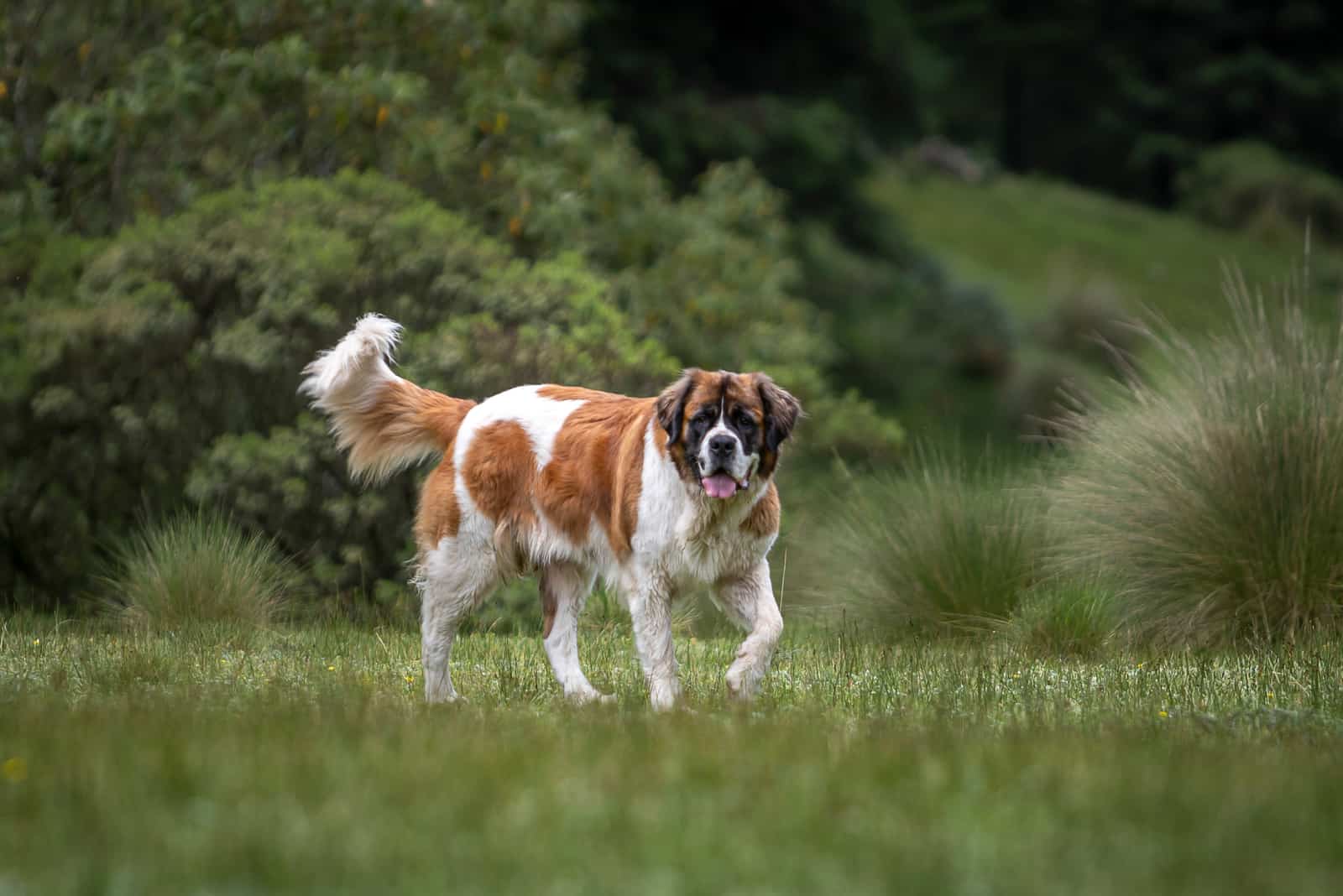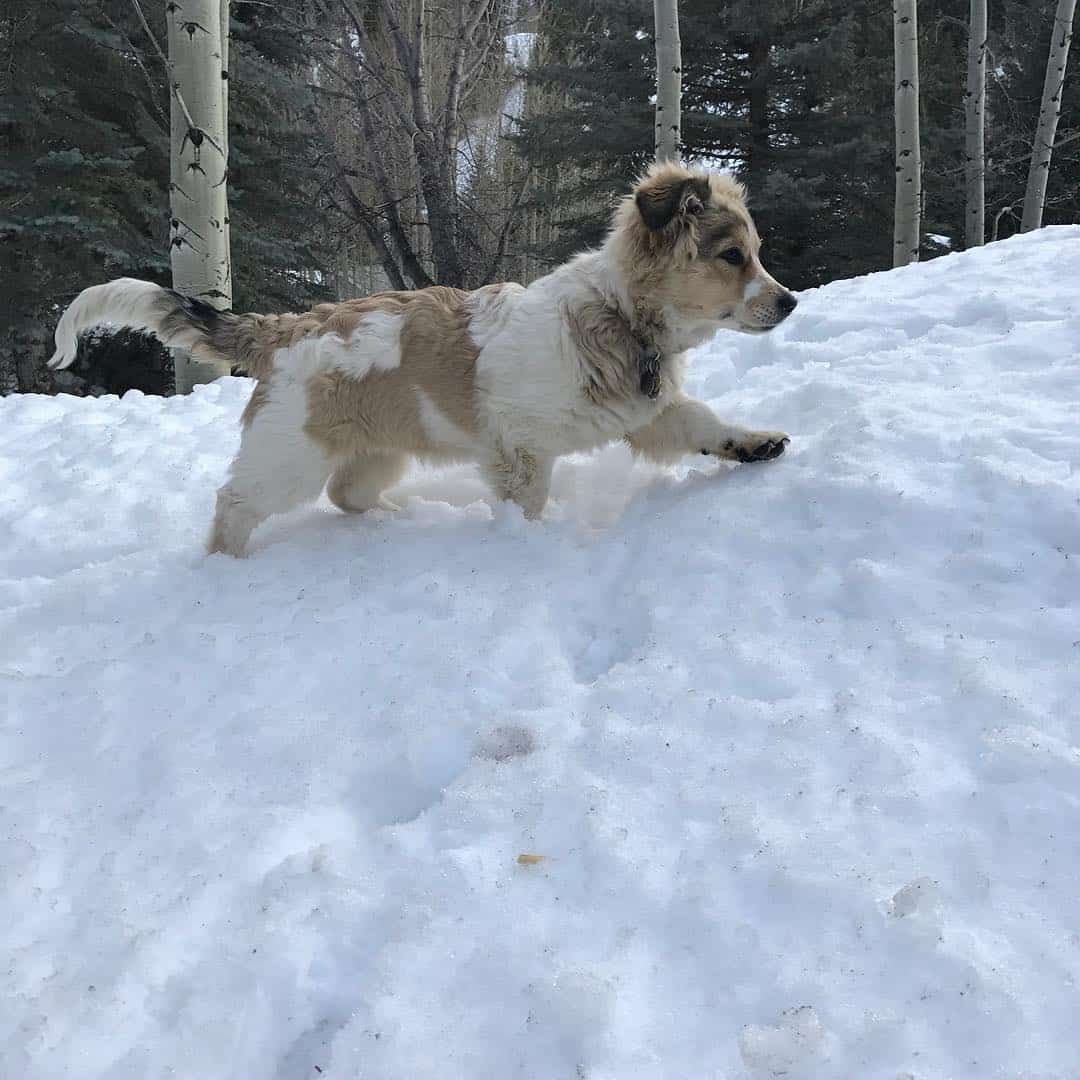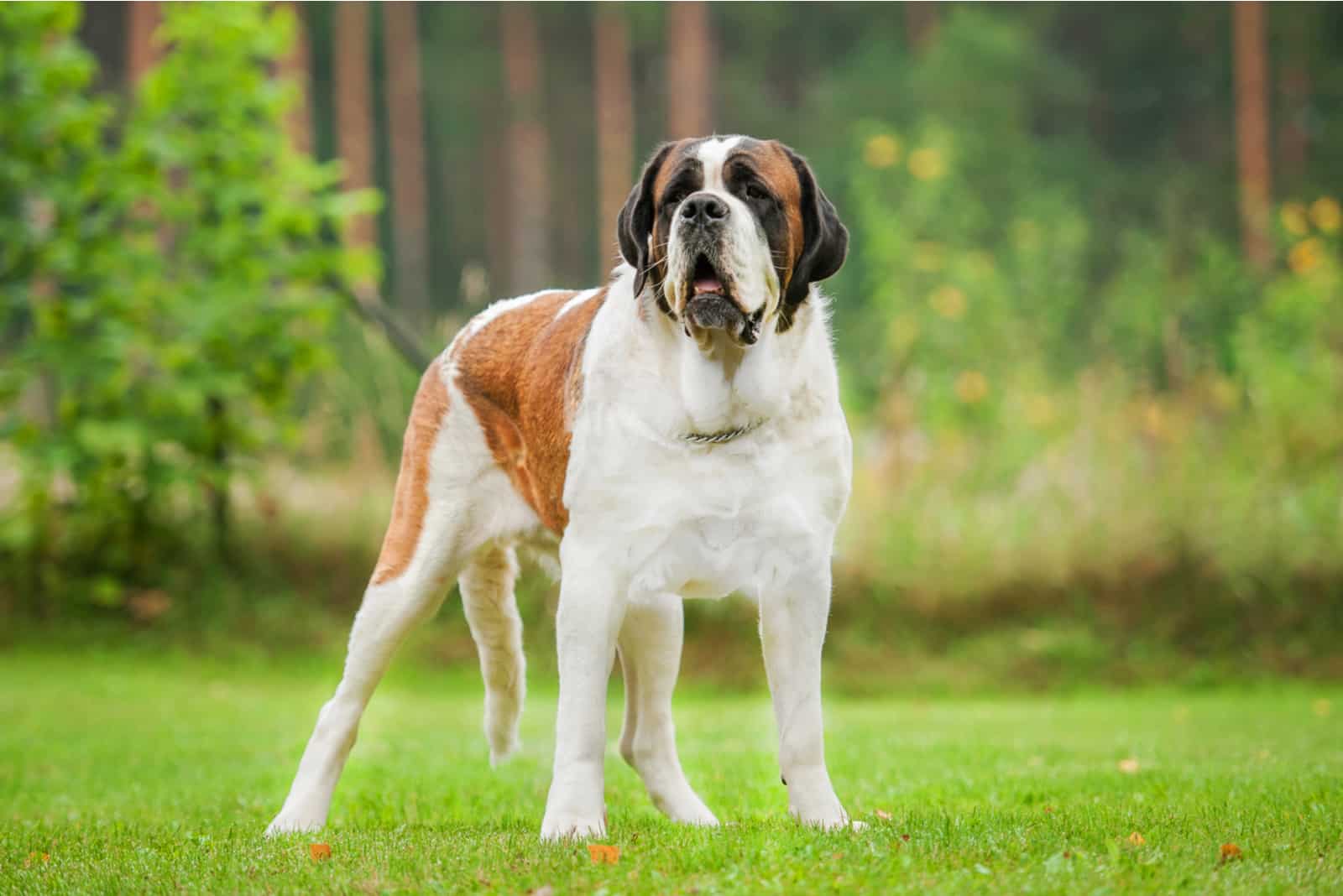Although purebred dogs and pedigrees still matter to some people, cross breeds have experienced a massive surge in popularity in recent years.
There doesn’t seem to be any particular reason for this other than the fact that it produces some unbelievably cute results. Traditionalists who prefer pure dog breeds will be alarmed at this rise, claiming that it puts purebred dogs at risk of extinction. They also suggest that it can result in unhealthy pups as genetic conditions are passed on from the parent dogs.
Fans of mixed breeds will contradict this, claiming that pedigree dogs are more likely to be unhealthy – and with good cause: selective breeding, including line breeding or inbreeding, has caused some severe genetic defects in many breeds, which are often deliberately produced so that the dog conforms to the breed standards as laid down by organizations such as the American Kennel
Club (AKC). Millions of dogs suffer daily for the simple reason that humans like them to look a particular way.
This argument isn’t likely to go away any time soon, so we’ll leave you to make up your own mind on the matter!
In the meantime, we’re going to examine the Corgi Saint Bernard mix, sometimes referred to as the Saint Corgnard, to see what we can discover.
It may well be that you’ve tried researching this unlikely pairing before, but without success. This is no surprise as there really isn’t a lot of information out there regarding these adorable balls of fluff! The best place to start is with the parent breeds as this gives us a good idea of what their offspring will be like.
The Welsh Corgis

There are two types of Welsh Corgi: the Pembroke, and the Cardigan, named for the counties in Wales where they were first bred. Both originated sometime in the 10th or 11th century, where they served as cattle herding dogs. There is some debate as to whether the two breeds are related; however, it is known that they were often interbred at various times, although they were regarded as a single breed for many years until the 1800s.
Their name is taken from the Welsh Cor-gi, meaning dwarf dog; a reference to their characteristically short stature.
Although they are very similar, there are a few differences between the two breeds, with the Cardigan Corgis being slightly heavier and with a denser bone mass. They also have a slightly different shape to the skeletal structure around the ribcage and front legs.
Typically, Welsh Corgis weigh between 31 and 37 pounds, and measure between 10 and 13 inches, with the Pembroke Welsh Corgi being on the smaller side.
In terms of temperament, they are alert, athletic, and high-spirited dogs that love to be involved with family events – especially any fun and games. They are dependable and loyal, but they can be reserved with strangers. Corgis are good with kids, and are mostly okay around other animals, but training and socialization go a long way towards curbing this behavior.
Their coarse-haired coat is usually short or medium in length, with a good undercoat. They are pretty heavy shedders, and they need regular grooming to keep the coat in good condition and to stop dog hair from spreading all over your home.
Breed standards allow Cardigan Corgis to be any color, but the Pembroke Corgi can only be black and tan, fawn, red, or sable, with or without white markings.
These robust dogs have a life expectancy of between 12 and 15 years, although with a good diet and the right care, they’ll easily exceed this.
The Saint Bernard

Alternatively written as ‘St. Bernard’ (either is acceptable), these large dogs are famous for their mountain rescue skills, locating lost travelers in the snowy Alpine passes.
They are often imagined with the familiar barrel of brandy strapped to their collars to revive the frozen travelers, but this isn’t a true reflection of history as only one single dog was ever known to do this. Not only is it unlikely from a medical point of view as alcohol is not good for warming you up, but the monks themselves also insist that their dogs have never carried barrels around their necks.
The breed takes its name from the hospice situated at the Great St. Bernard Pass in the Western Alps, where monks trained these dogs to find travelers who had lost their way in the treacherous conditions.
These are big dogs, standing between 26 and 30 inches at the shoulder! They can weigh between 120 and 180 pounds, with females usually being at the lower end of the scale in terms of both weight and height. Check out the Saint Bernard growth chart for more information!
Saint Bernards are affectionate and good with children, and they are generally okay with other dogs (socialization helps!). They are smart dogs that need mental stimulation, but they are highly adaptable to changing circumstances.
Their thick double coat protected them against the freezing Alpine conditions, and they are moderate shedders. Regular grooming is essential, but perhaps less so than with Corgis.
Their coats come in a wide variety of colors, not all of which are accepted under the AKC breed standards. Most will have a white coat with red, mahogany, rust, brown, or orange, along with a black mask.
If there’s one drawback to these gentle giants, it’s their lifespan, which is usually between 8 and 10 years. This is a problem that is common to big dogs. Scientists believe that it is a result of the puppies having to grow so quickly, speeding up the aging process.
St. Bernard Corgi Mix

Photo from:@reneemtallent
We’ve looked at the two breeds that make this beautiful dog, so now let’s see what we get when we cross them. First, there’s the name, Saint Corgnard. In the tradition of hybrid dogs, it’s an amalgamation of the names of the two breeds, and it is a good match for these wonderful pups.
As with all Corgi mixes, they have the distinctive short legs that make them so adorable. Other than this, they will generally have the classic coat colors of the Saint Bernard (as listed above), and may even have floppy ears!
Because there are so few recorded examples of these dogs, it’s extremely difficult to say for certain what the average height and weight will be. In theory, they will be roughly the same size as a Corgi, probably a bit bigger.
You should expect them to weigh between 35 and 40 pounds, and perhaps standing as high as 14 inches, possibly larger.
Both parent breeds have a history of being working dogs, meaning that your Corgi Saint Bernard mix is going to be active and athletic. They’ll need plenty of exercise, and will become bored and restless if they don’t get enough.
In terms of personality, it depends on which genes are the most dominant, but you can be sure that this dog will want nothing more than to be your best friend. Both breeds are eager to please, so training them shouldn’t be too much of a problem.
It’s a pretty safe bet that they’ll be affectionate and playful, making them an excellent family pet.
What Is The Best St. Bernard Mix?

Photo from:@puppy_doh
That’s a bit like asking, which is the best dog breed? There’s no right or wrong answer; it all comes down to which one suits you best!
There are plenty of websites displaying various Corgi mix puppies, all of which have their own appeal. Of course, they retain the classic Corgi look to some extent, but each different mixed breed shows features from both parents, with some very cute results.
Here are a few to consider, along with their somewhat cheesy names:
• Corgi German Shepherd dog mix (Corman Shepherd)
• Corgi Bulldog (Bulldorgi)
• Corgi Border Collie (Borgi)
• Corgi Australian Shepherd (Augie)
• Corgi Beagle (Beagi/Corgle)
• Corgi Toy Poodle (Corgipoo)
• Corgi Siberian Husky (Horgi)
• Corgi Chihuahua (Chigi)
• Corgi Dachshund (Dorgi)
• Corgi Pitbull Terrier (Corgi Pit)
• Corgi Golden Retriever (Golden Corgi)
• Corgi Chow Chow (Chorgi)
• Corgi Pug (Porgi)
• Corgi Great Dane (Great Dorgi)
• Corgi Cocker Spaniel (Pembroke Cocker Corgi)
• Corgi Great Pyrenees (Corginees)
• Corgi Bernese Mountain dog (Bernorgi)
• Corgi Rottweiler (Rottgi)
These are a few of the curious mixes out there; some of which you can imagine, others that really need to be seen to be believed! These are among the cutest dogs you’ll see, but as to which is best, well, that’s up to you to decide.
Dog lovers have different likes and dislikes, lifestyles, and circumstances. A breed that suits one person will not appeal to another. All of these mixed-breed dogs will have the charm and feistiness of the Corgi, along with some of the personality and character traits of whichever dog it is crossed with.
As beautiful as all these weird and wonderful mixes are, it’s important to remember that many would not happen naturally. You only need to think about the physical logistics involved in breeding a Corgi with a Great Dane to realize that it’s unlikely to be natural. This means that some of these breeds will have been artificially inseminated.
While this is not exactly a rare occurrence in the world of dog breeding (for example, Pugs, English Bulldogs, and French Bulldogs rarely breed naturally), it does raise some ethical questions. As well as this, there is the fact that some will inherit genetic health conditions.
Established breeders that have earned a good reputation over the years will have the knowledge and experience to deal with these processes properly. So, choose your breeder wisely!
How Big Do St. Bernard Mixes Get?

Photo from:@puppy_doh
Mixed-breed dogs can vary greatly in size depending on the breeds involved, and St. Bernard mixes are no different. Cross a St. Bernard with a Mastiff (to create a St. Bermastiff!) and you could end up with a dog weighing around 200 lbs.
Corgi mixes will tend to be short and stocky, but their overall height and weight will be affected by the second parent breed.
For example, you would expect a Chigi (Corgi Chihuahua mix) to be smaller than a Bernorgi (Corgi Bernese Mountain dog).
It’s difficult to provide detailed figures because these mixed breeds are exceedingly rare!
In general, you might expect the Corgi Saint Bernard mix to be protective – it will make a great watchdog! Be prepared for a lot of barking if they see something they think might be a threat.
It is possible to guess what the pups might look like to a certain extent, but determining their temperament is more of a challenge. Generally, the loving, placid character of the Pembroke Welsh Corgi balances out any negative traits from other breeds, but it is impossible to tell until you meet each individual pup.
The Corgi Saint Bernard Mix Lifespan

Photo from:@puppy_doh
We’ve seen that the Saint Bernard has a short life expectancy, not usually living beyond 10 years. Thankfully, the Corgi balances this out with its lifespan of 12 to 15 years.
There’s a fair chance that this will be passed onto the mixed breed pups, so you can expect your Corgi Saint Bernard mix to be with you for a good few years.
Of course, you have to take into account that some mixed breeds are prone to certain health conditions. Unless you buy your dog from a reputable breeder, there is no way of knowing whether your pup has been tested, or whether the parents were screened for particular diseases.
Assuming that you get a healthy puppy, you can increase its lifespan by giving it the very best care and attention. This means feeding it good quality food that’s appropriate for their age, size, and activity level.
Regular grooming sessions should start when they are young as this will help them to get used to the process. It’s a great opportunity to bond with your precious pup, and it also gives you the chance to check them over for any sign of sickness.
Finally, you should book your puppy in for a general health check at the vet at least twice a year.
Why Are St. Bernards Dangerous?

Saint Bernards… dangerous? Seriously? We’ve already noted that they are placid and gentle-natured. They are not known as an aggressive breed, and are rarely cited in statistics relating to dogs biting humans.
However, when you have one of these giant dogs in your home, you have to be aware of all potential hazards. So, what is it about the Saint Bernard that makes it dangerous?
As you might have guessed, it’s all about their size! These gentle giants are so enormous that they carry a real risk of knocking you down. This is especially true in restricted areas, such as inside your home, and when small children or elderly adults are about.
Generally, these dogs are calm and reserved. Any knocks and bumps will be accidental, but they still can occur, which is why you need to be vigilant. It might happen on the stairs or in a narrow passage when the dog tries to squeeze past, which could knock someone off balance.
The thing is, although Saint Bernards are usually calm, this is partly a result of training and socialization. It is advisable to train and socialize your pup as soon as possible. Saint Bernard puppies are pretty big, and they’ll grow rapidly. They can be just as boisterous as any other breed, but they start to calm down as they age.
Saint Bernards can be protective of you and your family, which sometimes comes across as aggression. Also, the last thing you want is a wilful and unruly giant dog. It would take an awful lot of strength to control an adult Saint Bernard that has decided to go its own way! You could be pulled over, or dragged along the ground, or even into traffic.
Training teaches them how to behave properly, reducing the chances of them jumping up or being aggressive towards people they see as a threat. They will learn to stop any bad behavior at your command, and accept people in your home when they realize that you are happy for them to be there.
All this isn’t so much of a problem with the Corgi Saint Bernard mix, as in all probability, your dog will be closer to the Corgi size. The most likely danger will be from nipping. Corgis are natural herders, and the herding instinct is often very strong. In the past, they would round up cattle and guide them along paths or into enclosures. Any beast that strayed off the path or was too slow would receive a quick, sharp nip to the heels. This probably wasn’t too painful for the animal in question, and they’d soon get over it, but it would be a different matter if it happened to a small child.
There is a good chance that the Corgi Saint Bernard mix could inherit this trait. Fortunately, this behavior can be discouraged by using training classes. Both Corgis and St. Bernards are intelligent breeds that are eager to please, which makes training easier. That’s not to say that it will necessarily be a breeze! It might take some perseverance and patience at the very start, but the advantage of training a smart dog is that they soon learn what’s expected of them.
Reward-based training while using a firm voice is the best way to get through to them. Never use harsh tones or be tempted to resort to smacking as this rarely gets the desired results.
What To Take Away From All This?

Photo from:@burrowontheback40
The Corgi Saint Bernard mix is extremely rare. Google this mixed breed and you’ll find out for yourself! There are some endearing pics out there, but little in the way of useful information.
Because of this, it’s hard to give a precise overview of what to expect or even where to get your Corgi Saint Bernard mix if you want one for yourself. But, that doesn’t mean you should give up looking! Your first stop should be Corgi or Saint Bernard breeders who will be able to guide you or at least point you in the right direction, assuming that they aren’t involved in breeding these lovely pooches themselves.
You might also want to contact dog shelters and rescue centers in your area to see if any have been left there. Of course, you’ll have no guarantees that the dog is an actual Corgi Saint Bernard mix as it is unlikely to have any official paperwork. A rescue dog is more likely to be an adult dog rather than a pup, which can add complications if the dog hasn’t been trained. There is also the possibility that the dog has been abused or mistreated, meaning that it may have behavioral problems that need to be overcome.
It’s not a massive dog, but it will need plenty of space to run around, such as a large garden or a securely enclosed backyard. Don’t let those short legs fool you! These dogs will have energy and stamina that need using up each day. They’ll benefit from agility training and dog sports, which give them mental stimulation as well as physical exercise.
Once you’ve finished training (crate training is especially effective with Corgis), you should be able to leave them alone at home for up to 8 hours – though this should never be the norm. Before leaving them, you should ensure that they have had at least an hour of exercise. Leaving a dog at home by itself day after day for many hours at a time is not fair on them, and it could result in behavioral problems. At the very least, they should have a companion, or someone to visit during the day at some point.
If you are lucky enough to get yourself a Corgi Saint Bernard mix, you’ll be part of an exclusive club. You might even want to start a Facebook page or post videos of your furry friend on TikTok!
This is one very special dog, with the calm watchfulness of the Saint Bernard and the playful, outgoing nature of the Corgi. You’ll have the best of both breeds… your very own Saint Corgnard!
Read Next: Mini St. Bernard: 14 Reasons To Own Or Not Own It
